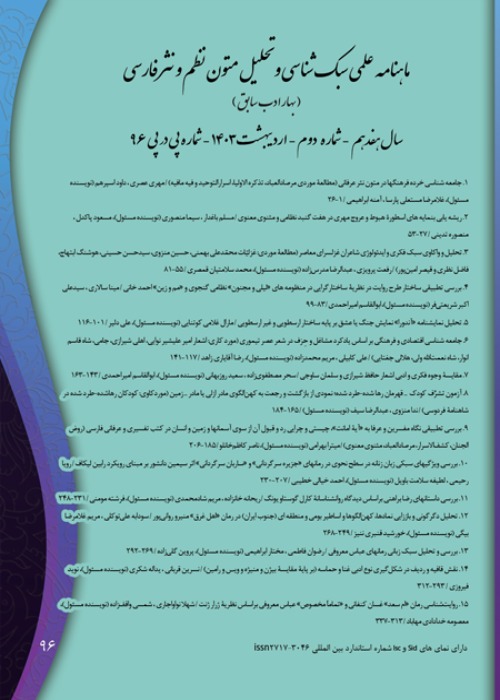Innovation and imitation in the eulogistic odes of the Persian Neo-Classicism Literary School
In this article, the general features of the Neo- Classicism in the Persian literature that is called return school in the Farsi, are briefly reviewed. Then, one of the most important but neglected point of this school is scrutinized; That is, eulogistic and religious odes. Research on the poetry of Persian Neo- Classicism school generally focuses on two areas: first one, identifying anonymous poets and correcting their poetical works, and other studies have been done on the methods of imitation and the influence of well-known poets. It seems that the Scholars agree on lack of innovations and additions poetry on this period, and by this reason, poetry of this period from prior times to nowadays to be rarely present in textbooks and excerpts from Persian literature.
This article examines the content of the poems of 16 poets in the desired period, verse by verse and provides statistics on the innovation of Persian Neo- Classicism poetry in the field of ritual poetry and stagnation, imitation and repetition in the poetry of government-affiliated poets of this era. From each poet, two poems have been analyzed, one about praise of Imam Ali and another one about Imam Reza. Data analysis was performed with Microsoft Excel software.
According to this research, there is an inverse relationship between the fame and innovation of the poets of this period. Well-known poets such as Saba and Qaani suffer from a lack of content, and deep precise poets such as Ayati Birjandi, Soroush Esfahani and Elahi Ghomshei do not have a great reputation. This challenges the judgments of authors of the periods of Persian Literature and their judging criteria.
It is shown here that the most what is said about the Persian Neo- Classicism is based on the government-affiliated poets of this school and periods, not the Shiite poetry. The content of Shiite poetry in this period is completely changed and its quantitative and qualitative growth is palpable.
- حق عضویت دریافتی صرف حمایت از نشریات عضو و نگهداری، تکمیل و توسعه مگیران میشود.
- پرداخت حق اشتراک و دانلود مقالات اجازه بازنشر آن در سایر رسانههای چاپی و دیجیتال را به کاربر نمیدهد.



